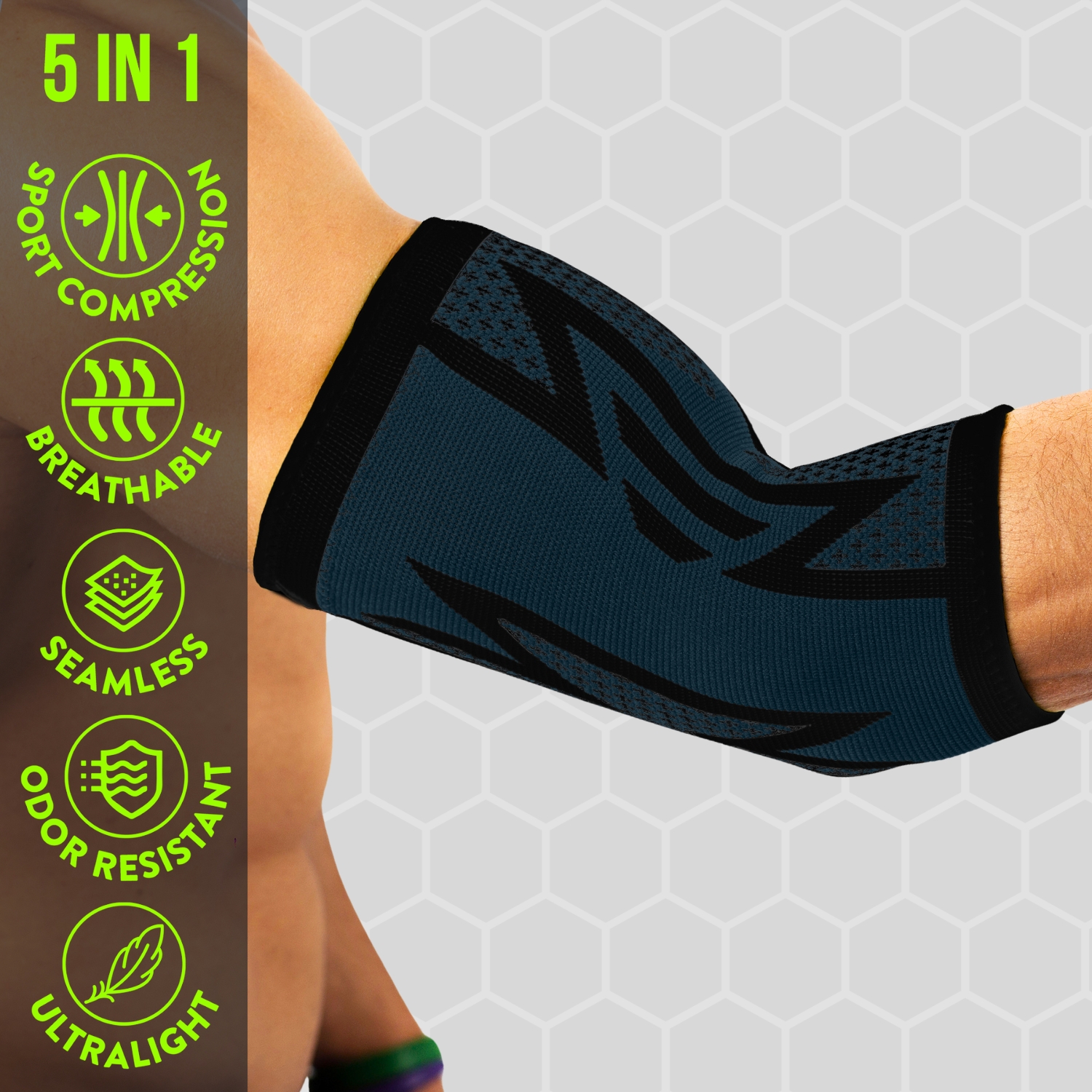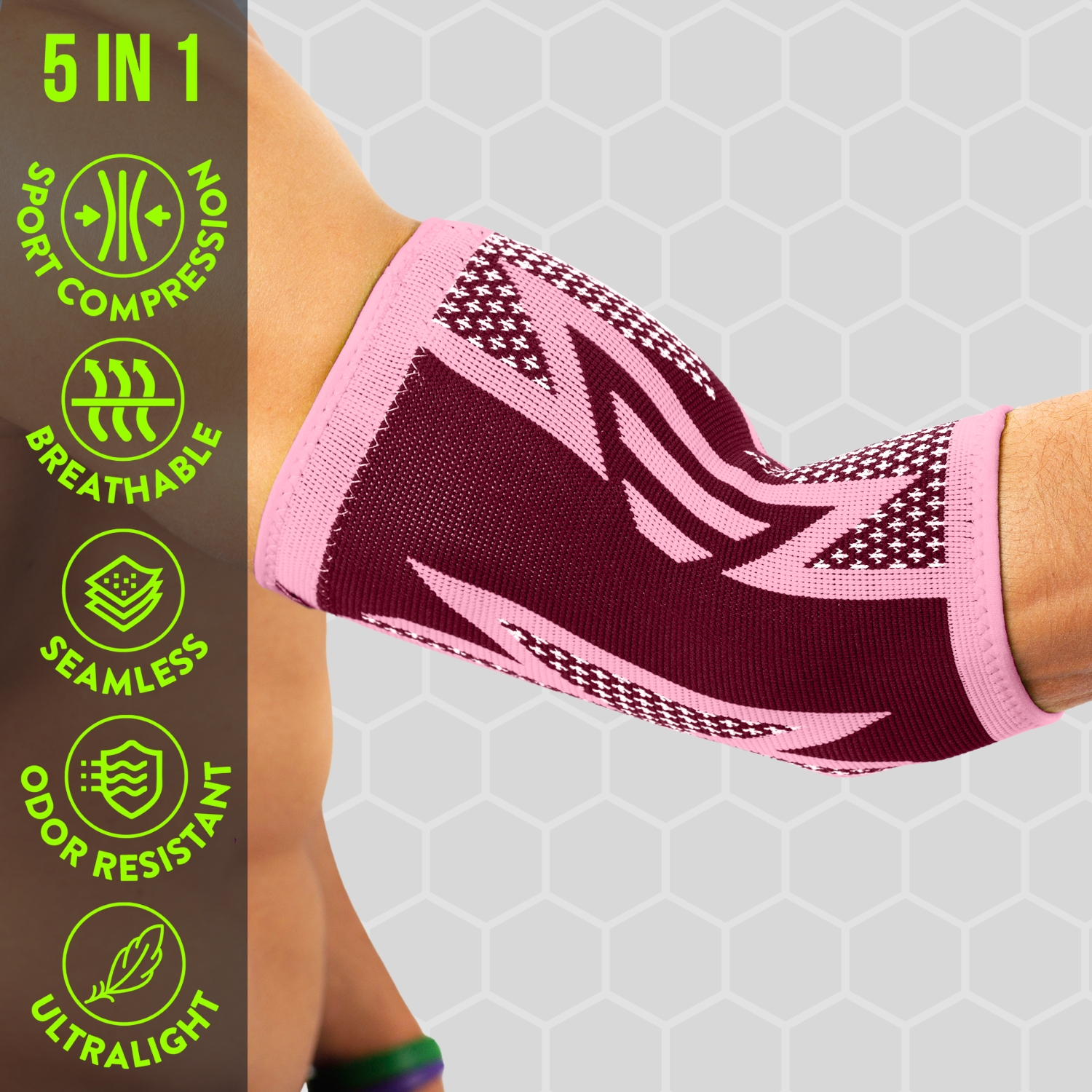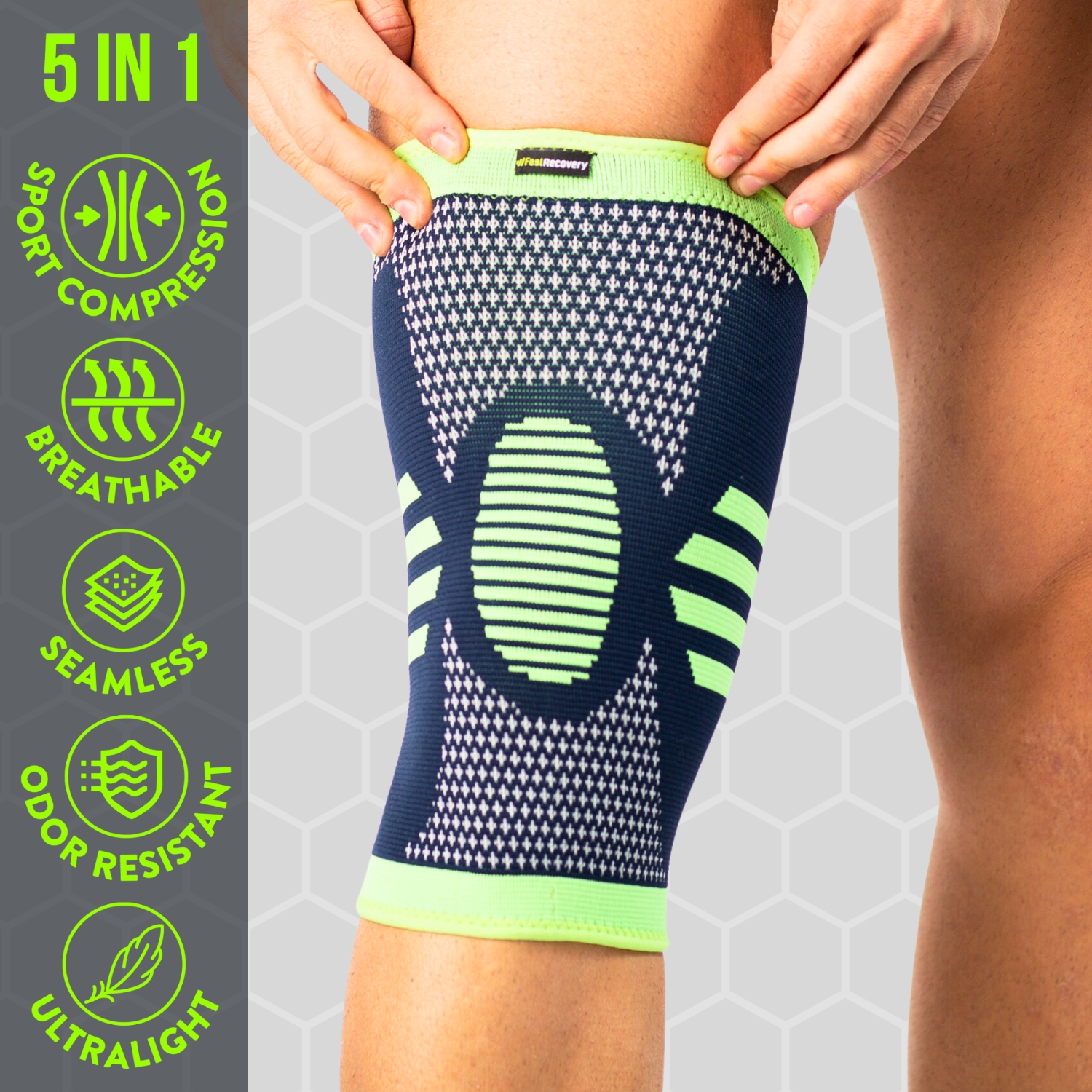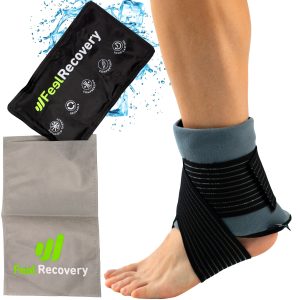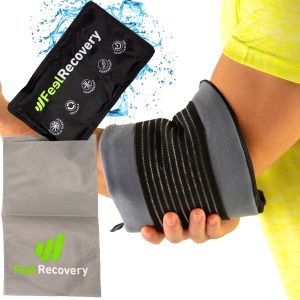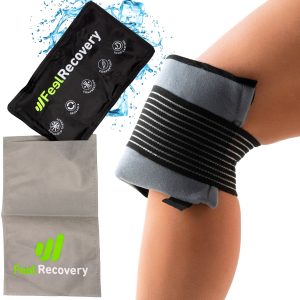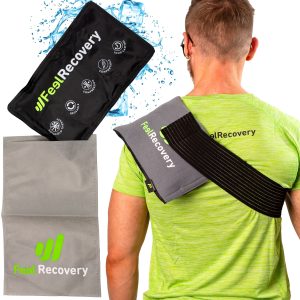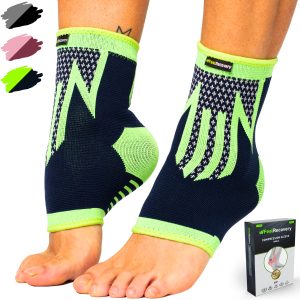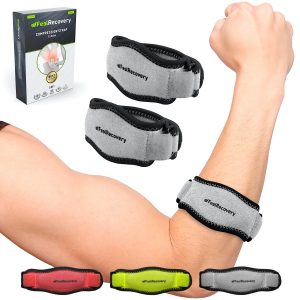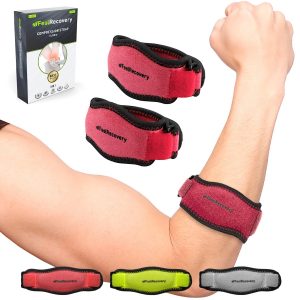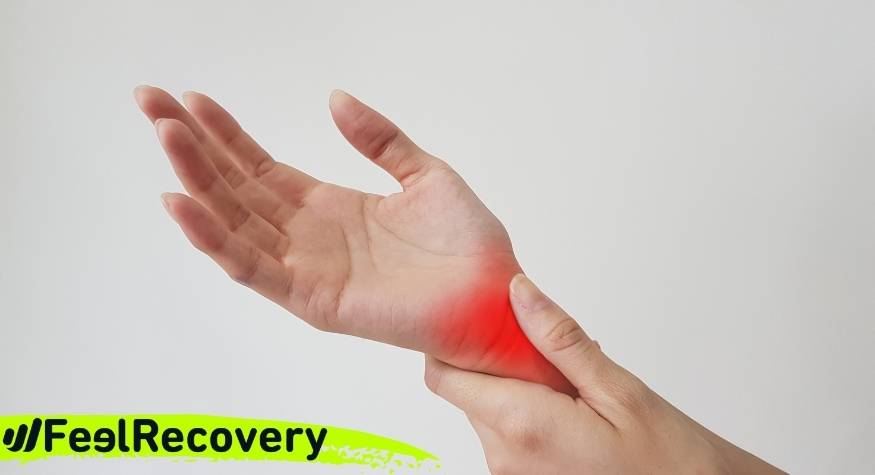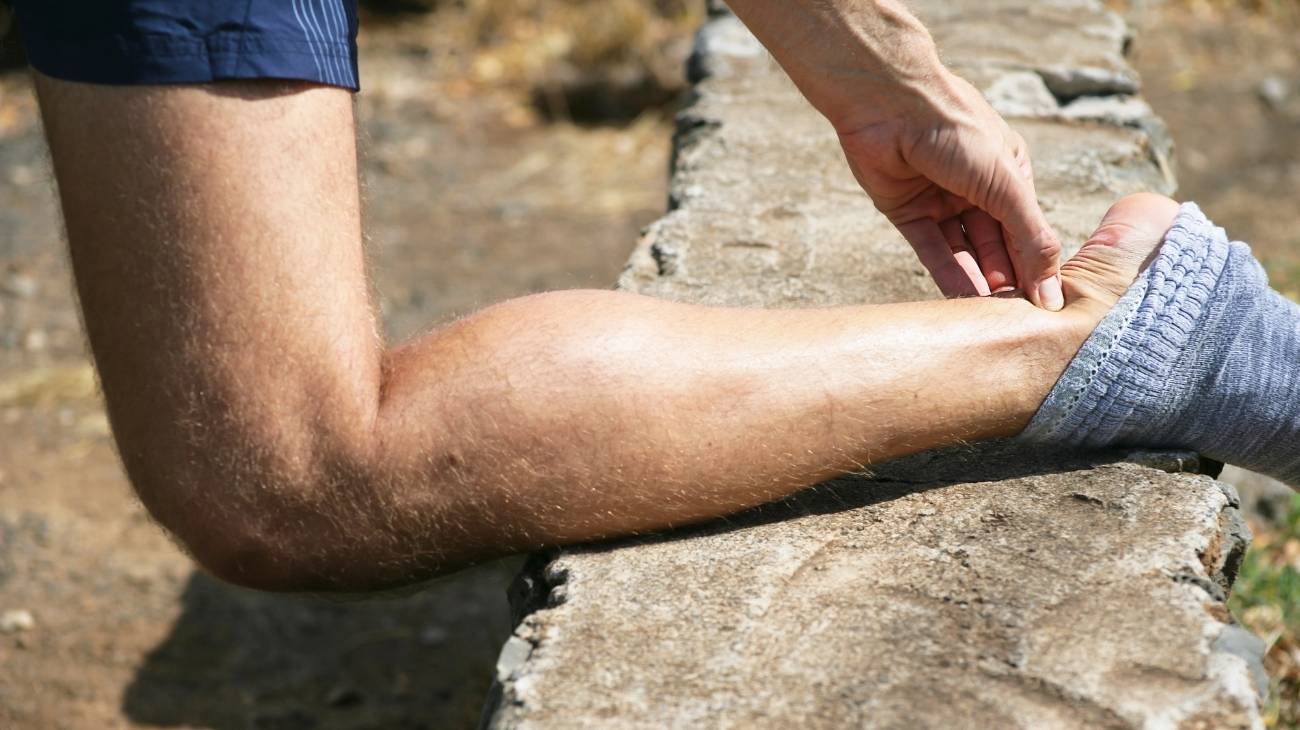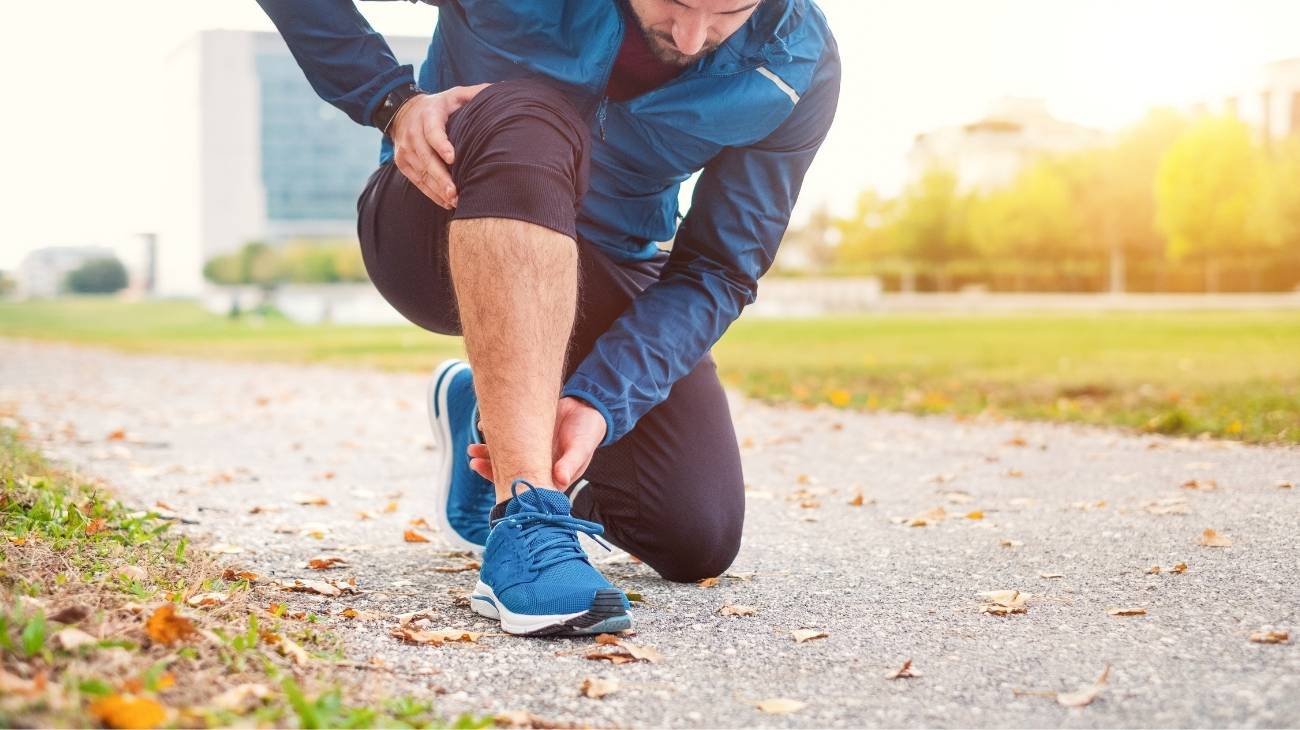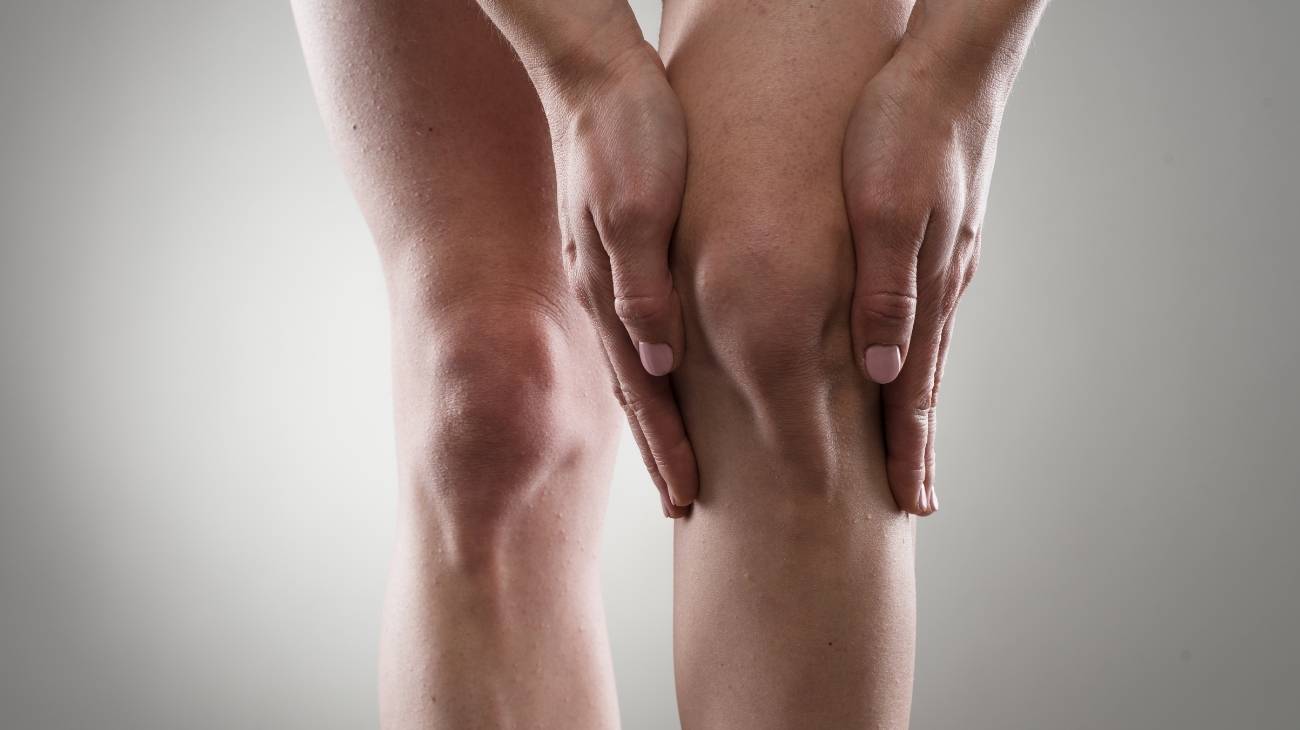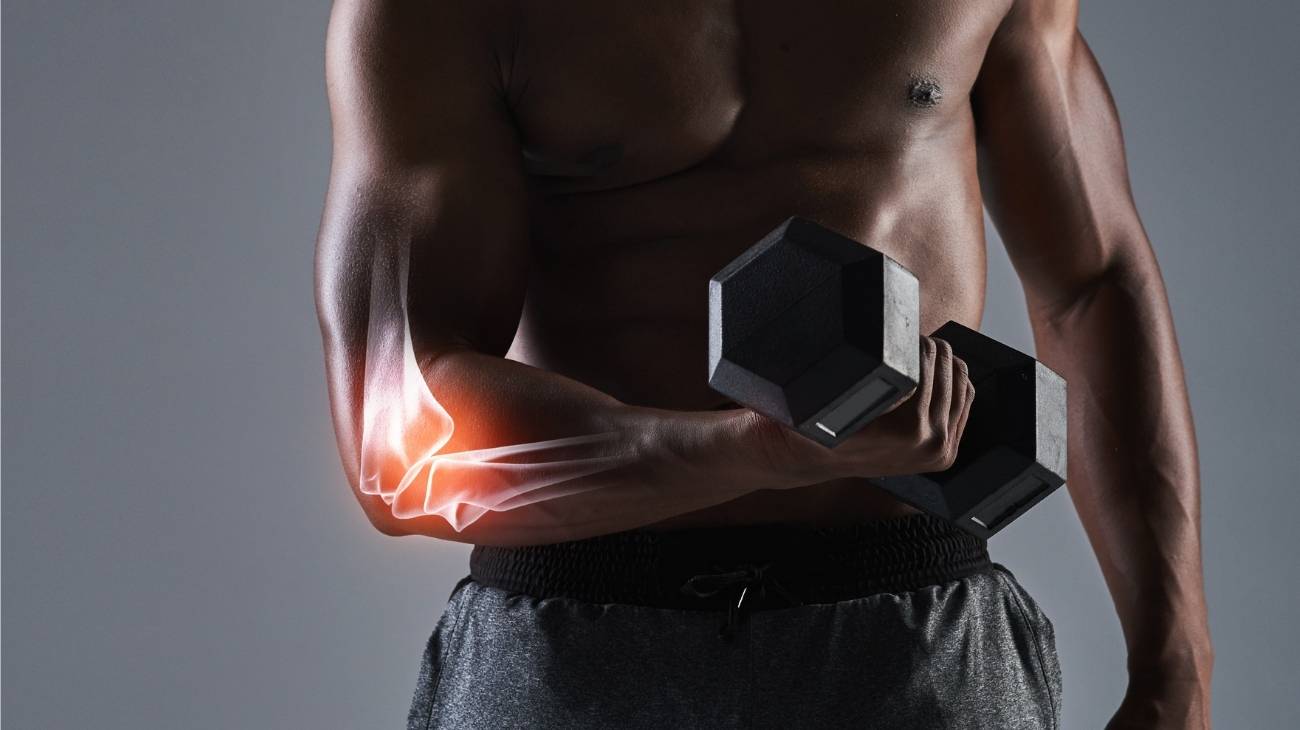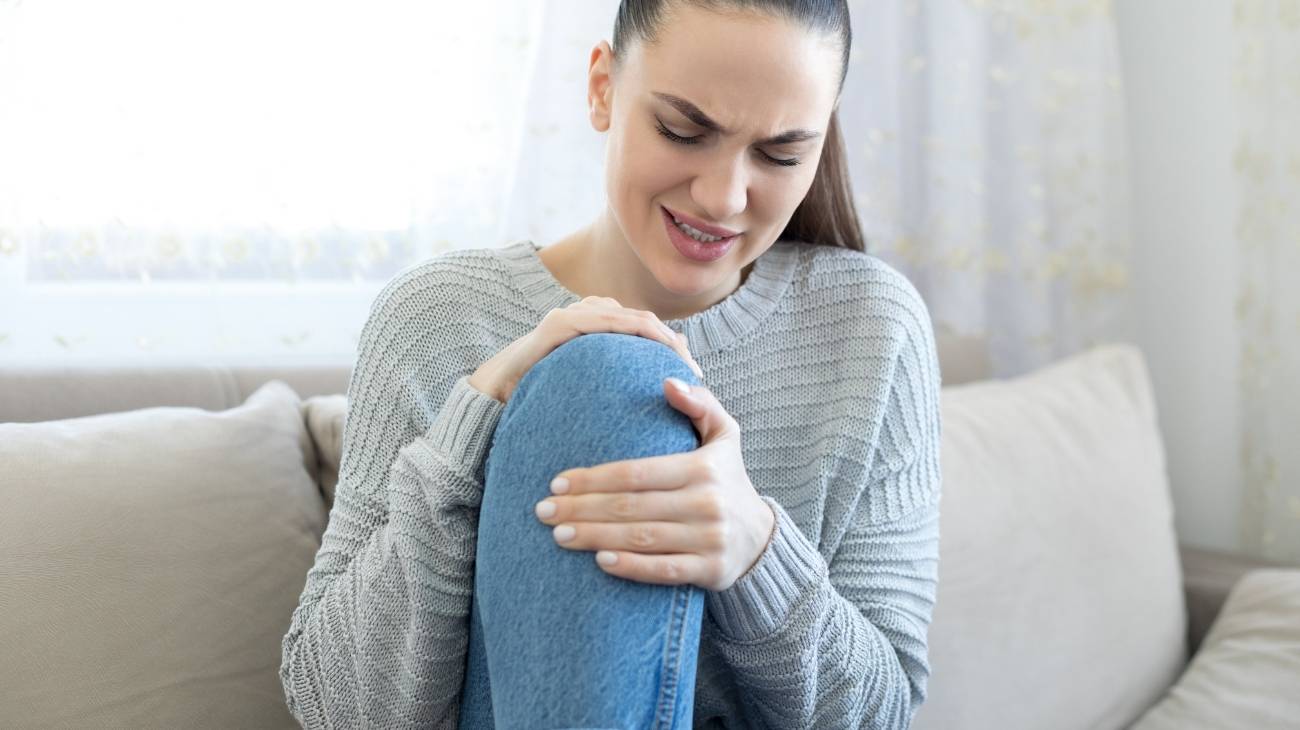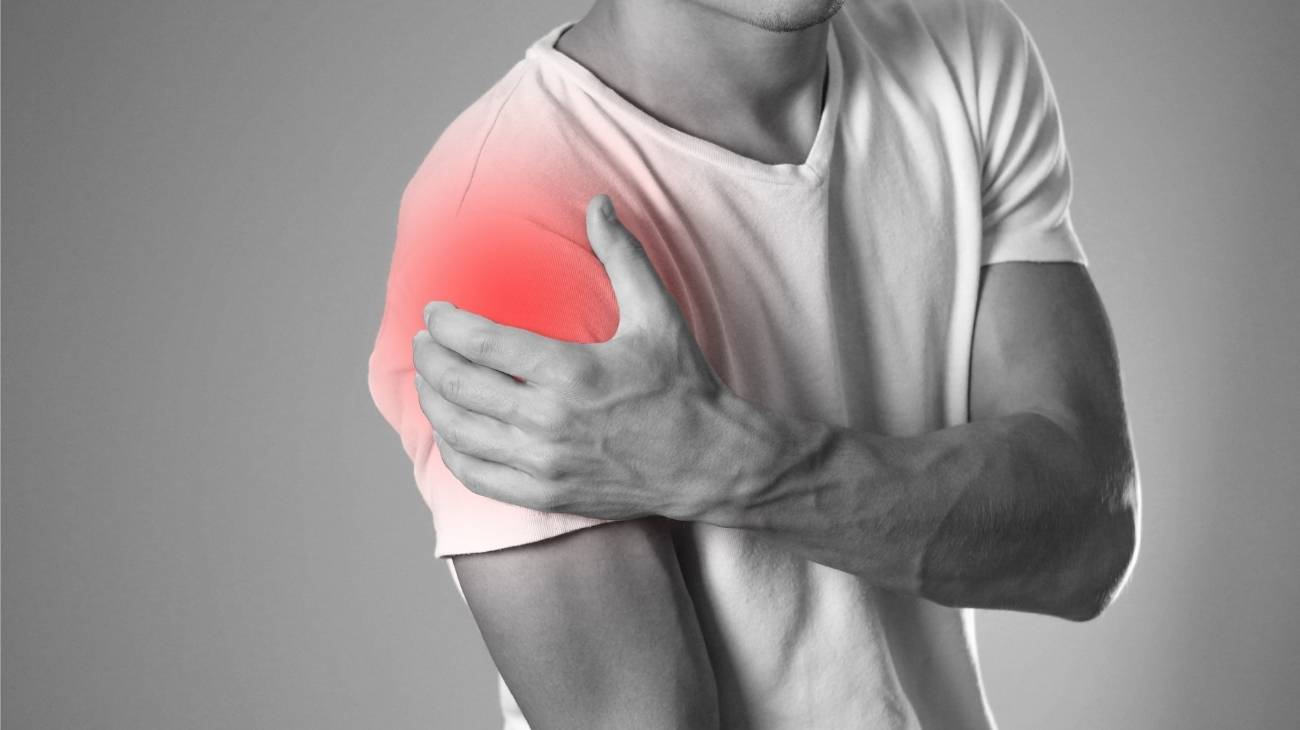- Definition: What is tendonitis or tendon inflammation?
- What are the most common types of tendonitis?
- Best tendonitis products
- What are the causes and risk factors for tendonitis?
- Main symptoms that warn us of tendonitis
- What treatments are available to improve and cure tendonitis?
- What methods of prevention for tendon inflammation are the most effective?
- F.A.Q: Frequently asked questions
It is possible to control tendonitis by means of treatment with drugs and conservative therapies, which will bring the disease into remission in a short time. But there are other cases, somewhat more complex, in which physiotherapy and even surgery are needed. But before going into these points in detail, you need to know what tendonitis is and how it is caused.
We will explain in an easy way what are the main symptoms of this tendon injury and you will also learn the most effective preventive methods that you should take into account to effectively treat the appearance of tendonitis in one of your joints.
Definition: What is tendonitis or tendon inflammation?
Tendonitis is an acute inflammatory abnormality that occurs in one or more tendons in our body, but it is not to be confused with tendinosis or tendinopathy, which is a chronic complication or condition in the tendon. When tendinopathy occurs, the fibrous tissue is not directed longitudinally, but rather erratically due to an initial condition that did not heal properly. As a result, nerve roots and blood vessels within the tissue are compressed , causing swelling and pain.
Initially other soft tissues such as ligaments or fascia are affected, but this increases over time. Therefore, this ailment is classified by degrees depending on its severity. From grade 1, where discomfort is felt when exercising, to grade 4, which makes activity and movement impossible. It should be borne in mind that poorly cured tendonitis can easily lead to tendinosis.
What are the most common types of tendonitis?
Tendinopathies can be classified according to their characteristics or the area where they occur. Although the best known are the knee, hip and shoulder tendinopathies, there are other tendinopathies that are more or less typical.
For this reason, it is convenient to divide them according to different criteria, which we mention below:
Classification by type
Tendonitis can be divided into:
Lateral epicondylitis: It is an irritation of the connective tissue that is located in the lateral external epicondyle of the elbow (projection of bone over a condyle). Specifically, the point where the tendon inserts the extensor carpi radialis brevis into the humerus bone. This condition is known as "tennis elbow" because there is a tennis motion that triggers it.
However, it can be caused by a number of factors unrelated to tennis. For example, throwing an object with force or lifting objects that are too heavy without the correct flexion. It is a focal stabbing pain syndrome with no significant inflammation. It usually goes into remission within 4 to 6 weeks of conservative treatment.
Medial epicondylitis: This is caused by irritation of the flexor pronator tendon group, which inserts at the epicondyle in the medial inner area of the elbow. Similar to lateral epicondylitis, it also has names associated with sport such as "golfer's elbow" due to the movement that golfers perform that causes tendinopathy.
It can also occur due to mechanical work such as typing on a keyboard, using a hammer or building with bricks. The frequent reason is overuse which generates micro-injuries in the tissue. Therefore, its symptomatology is linked to pain and discomfort.
Rotator cuff tendonitis: Arises as an inflammation in one or some of the tendons (infraspinatus, supraspinatus, teres minor and suprascapular) that work for the shoulder joint, which connect various muscles with the head of the humerus and the scapula.
Their most notable feature is a continuous pain in the outer region of this joint, whereby movements of the arm can increase the sensation of pain. If movement continues to be forced or treatment is postponed, a tear may be imminent. It is one of the most common tendonitis.
De Quervain's tenosynovitis: This is more common in female patients. In this syndrome, the inflamed tendons are those located at the wrist, towards the thumb. The synovial sheath that protects these connecting tissues is also likely to swell, leading to synovitis. Like other tendonitis, this condition is caused by overloading or overuse of the tendon.
The painful sensation, tingling and swelling are focused in the lower part of the thumb. Some people describe a particular stiffness and difficulty in moving this finger. In untreated cases the painful symptoms may extend into the forearm. However, they tend to be temporary and conservative treatments are applied.
Spring finger or thumb: The medical term is stenosing tenosynovitis, which occurs when one of the fingers becomes jammed when flexed and a lump can be seen at the base of the injured finger, and the finger can be flexed with stiffness and little gliding.
These signs are the consequence of a thickening due to swelling of the synovial tissue covering the tendon, so that the inflammation causes pain and makes it difficult to perform the extension movement. It is possible to hear a slight snapping sound when moving it, hence the name "spring finger", similar to the sound a spring makes when tension is released. In extreme cases, the affected toe may become jammed.
Achilles tendonitis: This is known as the inflammatory pathology of the most powerful tendon of the locomotor system, the calcaneus or Achilles tendon. It connects the soleus, plantaris delta and gastrocnemius muscles of the calf to the back of the calcaneus, and is more likely to occur in males and middle-aged individuals.
It is also common in athletes, although it can occur in anyone who overloads the joint area or suffers abnormal wear and tear. There is a good prognosis for these cases, as they improve under medical therapy, physiotherapy and drugs (only used under medical supervision).
Peroneal tendonitis: This condition is a swelling of the fibrous cords that carry the peroneal muscles on the outer side of the leg to the bone. These muscles give stability to the joint area of the foot and ankle. The syndrome is sometimes caused by strain, stress, recent injury or trauma to the area, including potential risk factors such as sprains, strains or torn ligaments.
The injured peroneal tendons are located behind the lateral malleolus in the ankle, up to the base of the 5th such fibrous cords equally provide stability as well as enabling lateral and lower ankle movement. Once swollen, the area will be painful and tender to the touch.
Tendonitis of the extensor tendons of the toes: This is an inflammatory process present in the extensor tendons that make it possible to move the toes, but also function to regulate the movement and lifting of the ankle. Usually, repetitive movements or stress over a long period of time produce the micro lesions in the tissue.
The risk is increased by improper footwear, prolonged standing or poor execution of certain exercises. For conditions such as these, a course of anti-inflammatory treatment, rest and therapy is followed. Only certain conditions require immobilisation under medical supervision.
Patellar tendonitis: In the case of patellar tendonitis or "jumper's knee", it is possible to find a disorder in the patellar tendon, a tissue that connects the patella in the knee joint area with the tibia. It has the purpose of facilitating the extension movement of the knee without complications. However, when it swells, the situation is uncomfortable and painful.
Its particular name is due to its frequent occurrence in jumping activities, such as volleyball. One of the latent risk factors is the unequal strengthening of the quadriceps over other muscles. Ignoring pain or discomfort in the area alone could lead to tearing, but rest, medical and physiotherapeutic treatments bring about an improvement.
Classification by body part
It is also possible to divide tendonitis based on where it occurs in the body. See below:
Rotator cuff tendonitis: this group of tendons surrounding the shoulder are responsible for moving and holding the humerus together with the scapula (or shoulder blade), so the work they are subjected to is continuous. When tendon stress or fatigue occurs or the pressure is constant and prolonged, it causes tendonitis. It is then that the patient presents pain which can vary from mild to intense, depending on the complexity of the movement to be performed. If the inflammatory condition worsens, it can lead to strain (when the tendon collapses, elongates or ruptures) or bursitis.
Tendonitis in the shoulder: When throwing an object or lifting, lowering, flexing and extending the arm, normal tension is generated in the shoulder muscles and tendons sliding through the synovial tissue to allow movement in the joint. However, when the supraspinatus or biceps tendons are overexposed to significant strain or impingement it causes inflammation and pain. It is a fairly common condition and tends to recur if not treated in time. In fact, as long as it lasts, mild necrosis or micro tears can develop leading to tendinosis. Common symptoms are heaviness and stiffness in all or part of the affected area. Physiotherapy is ideal for treating this condition.
Tendonitis in the elbow: Pain in the elbow due to inflammation can come from different tendons located in the area. For example, the tendon located in the inner area of the forearm causes epicondylitis, although it is also possible to find lateral epicondylitis in the same structure that runs from the forearm muscles to the elbow. The latter is popularly known as tennis elbow. It should be noted that in both cases the aetiology is similar, but they differ in the injured area. While hyperextension of the elbow promotes one, hyperflexion promotes the other.
Tendonitis of the hands and wrists: The small wrist joints contain multiple tendons that can be affected by inflammation. Under normal conditions they allow movements between the hand, fingers and wrist. However, when tendonitis arises it is because any one of these fibrous connective cords has been affected. The most common is the one that is reflected in the thumb hinge as de Quervain's tenosynovitis. Such flexor tendons are affected by activities as common and repetitive as writing or cutting with scissors. In addition, some diseases such as gout or arthritis also trigger it.
Tendinopathy in the hip: In the trochanter any of the gluteal tendons (greater, middle and lesser) may suffer from tendinopathy. These cords near the hip make walking possible, so their inflammation causes pain when walking or bending the leg. In some cases, symptoms may even be reflected when sleeping. This tendon complaint is most prevalent in middle-aged women, although activities such as cycling, walking or running also play a role. Other associated pathologies such as arthritis, impingement or malformations are also risk factors for this condition.
Knee tendonitis: Patellar tendinopathy is an inflammatory reaction in one of the tendons in the knee area. It is usually caused by degeneration in the tissues, overload, blows or injuries that occur in the patellar tendon located on the upper side inserted in the kneecap. Another recurrent tendinopathy is "goosefoot" or anserine tendinopathy, which injures the internal anserine tendon in the knee. Quadriceps tendinopathy or iliotibial band tendinopathy may also occur in this area. In these, the quadriceps tendon and the tensor fascia latae tendon are inflamed respectively.
Tendonitis of the ankle: It is possible to suffer from posterior tibial, flexor or peroneal swelling in this part of the body. In peroneal tendonitis, the tendons of the peroneal muscles that cover the outside of the ankle are affected. Similarly, the swollen tibialis muscle tendon causes tibialis posterior. Finally, flexor tendonitis exhibits more pronounced pain at the back of the ankle, by the big toe. Although these three categories are the most common, any of the fibrous cords located in this joint can become inflamed.
Achilles tendonitis: Also known as Achilles tendinopathy. It is a condition of abnormal swelling in the fibrous connective tissue between the calf muscles and the heel. Pain is exhibited mostly 3 to 10 centimetres above the insertion of the tissue into the bone. When the tissue is involved, stiffness, mild to severe pain and hypersensitivity are noted. It is among one of the most recurrent injuries among athletes or people who exercise irregularly. If exposed to sudden starts, stops or just sudden movements the tendon tends to become stressed leading to tendonitis. This is one of the most common causes of tendonitis.
Best tendonitis products
Bestseller
-
2 Elbow Compression Sleeve (Black/Gray)
$24.95 -
2 Elbow Compression Sleeve (Green/Navy)
$24.95 -
2 Elbow Compression Sleeve (Pink/Bordeaux)
$24.95 -
2 Knee Compression Sleeve (Green/Navy)
$24.95 -
2 Knee Compression Sleeve (Pink/Bordeaux)
$24.95 -
Ice Pack for Foot - Cold Therapy Socks (Black)
$24.95 -
Ice Pack for Foot - Cold Therapy Socks (Green)
$24.95 -
Ice Pack for Foot - Cold Therapy Socks (Pink)
$24.95
-
2 Ankle Compression Sleeve (Black/Gray)
$24.95 -
2 Ankle Compression Sleeve (Green/Navy)
$24.95 -
2 Ankle Compression Sleeve (Pink/Bordeaux)
$24.95 -
2 Knee Compression Sleeve (Black/Gray)
$24.95 -
2 Patella Knee Strap (Black/Gray)
$14.95 -
2 Patella Knee Strap (Green/Navy)
$14.95 -
2 Patella Knee Strap (Pink/Bordeaux)
$14.95 -
2 Tennis Elbow Brace (Black/Gray)
$14.95 -
2 Tennis Elbow Brace (Green/Navy)
$14.95 -
2 Tennis Elbow Brace (Pink/Bordeaux)
$14.95 -
Shoulder Support Brace (Black)
$29.95 -
Shoulder Support Brace (Green)
$29.95 -
Shoulder Support Brace (Pink)
$29.95
What are the causes and risk factors for tendonitis?
Ithas been estimated that around 70% of people have suffered from mild or chronic tendonitis in their lifetime. Simple everyday activities can expose this tough, flexible fibrous tissue to inflammation.
Take a look at the most common causes of tendonitis one by one:
- Demanding professions: Any type of work that requires prolonged movements in the same joint exposes the tendons to undue stress. This increases the likelihood of inflammation in the bands.
- Sudden movements: An unexpected twist, sudden weight lifting or sudden bending can trigger tendon irritation. Even more so if the muscles have been at rest for too long and then switch to strenuous activity.
- Overuse: Reproducing a movement for too long can lead to overuse injuries to the tendons. For example, construction workers when they have to demolish a wall.
- Overload: Keeping the muscle and tendon under tension results in fatigue of the tissues. Such exhaustion can manifest with pain, irritation and weakness in these tissues, resulting in tendonitis.
- Incorrect positions: Overuse due to excessive strain is also due to bad positions or staying in the same plane for too long. The risk increases when the position forces the joint area; for example, squatting.
- Trauma: A direct impact on the region overlying the tendon could significantly affect this tissue. Also falls, even without having open injuries, are a frequent cause of tendinopathies.
- Injuries: Joint injuries are a very frequent aggravating factor in tendinopathies due to the mistreatment that the area of the tissues in charge of mobility has suffered, which end up swelling.
- Ageing: At the cellular level, all tissues lose their fibrous structure over the years. They lose elasticity, power and strength, so tendons are not exempt from this degeneration. Therefore, the older you get, the more likely you are to suffer tendinopathies.
- Sports: Certain high-impact sports practices strengthen some muscles over others. This ends up being counterproductive for the locomotor system, especially for tendons.
- Certain autoimmune diseases: Gout disease, rheumatoid arthritis, psoriasis are disorders that can lead to tendonitis. Since these affect any of the articulatory soft tissues, modifying and corroding the walls of each one.
- Diabetes: Although it is not a direct originator, it is a common factor given the musculoskeletal alterations it generates. Thus, the consequences of suffering from diabetic conditions (microvascular anomalies and collagen accumulation, among others) often lead to complications in the connective tissues.
- Inadequate footwear: For tendinopathies of the lower extremities, the use of tight and uncomfortable footwear is a causal agent. The reason is that the structures compress the joint leading to irritation at the tissue level.
- Overweight: People with any index of obesity are more likely to suffer from tendon inflammation. This is due to the abnormal effort made by these connective tissues to maintain the locomotor system.
- Lack of warm-up: The lack of gradual exercises with different levels of effort can cause sudden movements, which leads to tendonitis.
Main symptoms that warn us of tendonitis
It is necessary to go to the doctor for any sign that may warn of the presence of tendonitis. For this reason we will show you below a list with a series of symptomatology patterns of these disorders
- Swelling: Vasodilatation in a lacerated, bruised or micro-teared region of the body is normal and necessary. It is the body's protective response in its immune system to recover the area. Of course, the inflammation must be controlled so that it achieves its objective (elimination of the damaged tissue) without damaging the structures.
- Tenderness in nearby regions: In tendonitis, the fibrous connective tissue has been injured, so it is likely that other parts have been damaged, such as the bursae, fasciae and so on. For this reason, you can expect the nerves to be more sensitive to touch, and it is also common for the skin to be reddened or enlarged.
- Difficulty or inability to execute movements: In the development of the disorder the swelling may continue to increase. Due to the lack of space, micro-injuries and swelling, the body may find it difficult or impossible to move the joint completely.
- Pain: Nerve fibres are also affected by the swelling of the tissue. Therefore, the first thing the body will do is to give a nervous alarm signal through the sensation of pain.
- Worsening at certain times of the day: A common sign among these disorders is that the pain increases when lying down and getting up. This happens in some affected areas of the body because the fibrous tissue is overloaded to perform these tasks.
- Appearance of nodules: Another common symptom in this type of ailment is the appearance of lumps under the skin that are visible to the naked eye. If these nodules are touched, they cause pain and can increase the degree of tendonitis, which is why it is not advisable to press on them.
What treatments are available to improve and cure tendonitis?
It is possible to improve and cure tendonitis by means of treatments that must be applied and directed by a medical professional. See below for the most effective therapies currently available.
Alternative and complementary therapies
The auxiliary and complementary treatments help to reduce the symptoms of tendonitis, these are:
- Hot and cold therapy: Temperature contrasts by means of cold and then hot baths (without causing burns) are often used for tendon injuries. This technique involves not overexposing the affected area to more than a few minutes of such temperatures. It is usually carried out by immersing the region in baths or by the use of wet compresses or wet tissues. It is advisable to seek the advice of a physiotherapist prior to the procedure.
- Compression therapy: Compression is achieved through the use of elastic bandages or compression garments such as knee, elbow or ankle pads. Although it is not appropriate to prolong its use, the first few days it improves mobility, reduces swelling and consequently pain. It is also common to use these compression garments in daily activities or sports practices to improve performance.
- Massage therapy: There are a variety of massages and self-massages that can be applied according to the injured fibrous cord. Friction massage is the most commonly used, but it is also possible to find experts who recommend Cyriax manual massages, by means of gliding pressures or kneading. However, one or the other alternative must always be guided in all steps by a specialised therapist in order to avoid further injury. The aim of this therapy is to stimulate the capillary walls by means of heat so that the affected tendons are properly supplied with blood.
- Acupressure therapy: Tendonitiscan also be treated by means of this millenary oriental technique, which consists of pressing strategic points of the body to achieve the emission of endorphins as a natural analgesic. This will help to reduce pain, reduce inflammation in the affected area and help the patient to find the mental balance needed to deal with the ailment. If this type of therapy is used, it is necessary that it is carried out by a real specialist in order to avoid the opposite effect, causing greater inflammation.
- Thermotherapy: In certain patients it is possible that the tendonitis may develop into chronic tendinosis. If so, thermotherapy works to increase the temperature of the damaged fibrous tissues. Once applied, a deep analgesic effect is achieved at the level of the damaged tendon. It can be carried out using heat lamps, baths, hot packs, sauna, shortwave, ultrasound and more.
- Natural remedies using plants: There are multiple plants, herbs and health-promoting foods, which contain magnesium, vitamin C, E and bioflavoids and act as muscle relaxants, anti-inflammatories and painkillers. Examples are turmeric, ginger and arnica. They can be applied by means of infusions or through external use, as is the case with aloe vera. Keep in mind that this should not replace medical treatment.
- Healthy lifestyle habits: Continuing visits to the physiotherapist, improving diet and exercise are some points to bear in mind to look after the health of the tendons. This treatment will also include the re-education of dangerous movements and the correct postures to be assumed by the patient, among other preventive advice to avoid tendinosis or tears.
Dietary supplements
It is possible to incorporate different supplements into the patient's diet that will help to improve the body's nutrients. Take a look at them:
- Arginine: This has vasodilatory effects, which transforms into nitric oxide to affect micro-restoration of the tendon and the rest of the joint. It has also been found to contribute to the generation of insulin and necessary hormones.
- Vitamins: Vitamins A, C and D are used as supplements to improve tendonitis conditions. For example, vitamin A increases the body's natural tuning of collagen. Such a component is part of connective tissues and thus gives structure to the whole body.
- Magnesium: Magnesium is an element that the body receives from a balanced diet, so supplementation is only necessary in certain cases. Other minerals already present in the body are usually taken preventively, such as zinc, calcium, copper and silicon.
- Collagen supplements and aggregates: Collagen is a protein available throughout the human body, so for some patients it is decided to take it orally to acquire essential amino acids. However, this type of application and injecting this substance has very different effects, in each case a specialist should be consulted.
Physiotherapy treatments
Physiotherapy for tendonitis may include:
- Stretching: There are different physiotherapeutic exercise therapies for the tendon condition. Most include gentle stretching, short repetitions and muscle strengthening.
- Electrotherapy with analgesic effects: Electrotherapy is understood as a therapy that, by means of different devices, sends electrical impulses to the tissues. Methods such as TENS, high and low frequency stimulators and galvanic currents have shown good results. In tendinopathies its most sought-after effects are sedative and anti-inflammatory.
- Osteopathy: It attacks those disorders found in the biomechanics of the body. It is a set of techniques that aim to seek the self-recovery of the organism.
- Shock waves: In this therapy it is the sound waves that play an important role, as there are radial and focal waves to treat painful lesions deep in the tissue. They are applied to the skin, do not hurt and go directly to the most injured spot. It is carried out in sessions of up to 7 visits.
- Dry needling: Dry needling is used in conjunction with myofacial treatment. This involves acupuncture-like needles going to trigger points to activate relaxation. However, it is somewhat painful and considered semi-invasive. Therefore, it is necessary to consult a doctor before making any decision.
- Ultrasound: Through the physiotherapist, ultrasound is a useful means of applying deep heat. It is generated by vibration at a frequency of more than 20,000 cycles per second. However, its abuse should be avoided because instead of repairing, it can end up lacerating fibrous tissue. Its main purpose is to facilitate regeneration and pain relief from deep within.
Medications
The most important thing to know at this point is that drug therapy must be supervised by your doctor to avoid side effects and future injuries. For this reason, you should never self-medicate, as this will lead to even more serious complications than tendonitis.
Among the range of medications that are used are:
- Anti-inflammatory drugs: This is aimed at the main objective, which is to reduce swelling so that tissue alterations do not occur.
- Corticoids or glucocorticoids: These hormones are produced by the body in the adrenal glands. However, they are worked synthetically in the form of drugs to treat various ailments. They are used to decrease tissue responses to inflammation.
- Botulinum toxin: This compound produced by the bacterium Clostridium botulinum can be given as an injection. Once injected, it temporarily blocks nerve signals so that the brain no longer perceives the intense pain.
- Collagen: Collagen infiltrations in the area near the problem is a good way to achieve early restoration. Among its many advantages, it provides hydration and cohesion to the tissue. This structural substance, present in the human body, is injected with anaesthetic or other medications.
- Platelet Rich Plasma (PRP): The centrifugation of a sample of the patient's own blood allows specialists to isolate platelets, which and similar blood components contain regenerative proteins. Such a concentration rich in growth factors or PRP is reinserted right into the inflamed area. Thus, in many cases, the tendon can be seen to improve in the shortest possible time.
Surgeries
In chronic or ruptured cases, tendon repair surgery may be necessary to see improvement, although sometimes tendon grafts are even required. These outpatient procedures use anaesthesia and require rest afterwards. Certain surgeons are likely to perform it in several sessions when the reconstructive case is very severe.
What methods of prevention for tendon inflammation are the most effective?
Everyday actions influence the well-being of the locomotor system. It is therefore advisable to be aware of preventive measures that reduce the risk of tendonitis.
- Warming up beforehand: You should not forget that muscle preparation is vital to avoid joint irritation. At least 15 to 25 minutes, try to do gentle exercises that gradually increase the activity.
- Balanced workouts: Everyone, regardless of age, can have a balanced exercise routine. Activities that involve the whole body strengthen the musculature, thus keeping the soft and connective tissue structure in shape.
- Avoid overloading: Don't stay in the same position for too long and don't perform the same movement over and over again. Also, try to change the areas of the body that you use for daily activities, this will help you to avoid overexertion with the same group of tendons. Don't forget to always maintain the correct posture for these tasks.
- Strengthen your hamstrings: Lack of exercise and activity leads to weakness in the locomotor system. This is when sedentary people are more prone to tendinopathies. Performing eccentric exercises with your own weight helps to strengthen tendons progressively.
- Maintain an active lifestyle without stress: Being sufficiently rested and practising yoga or meditation will help to reduce the risk.
- Choose a balanced diet every day: Eating foods rich in vitamin C, B1, B5 and vegetables prevents tendonitis. The important thing is to avoid trans fats and junk foods that increase body weight and uric acid.
- Drink water every day in healthy amounts: Hydration is one of the keys to proper blood supply to the fibrous cords.
F.A.Q: Frequently asked questions
Get to know the most frequently asked questions that will help you better understand what tendonitis is:
References
- Almekinders, L. C., & Temple, J. D. (1998). Etiology, diagnosis, and treatment of tendonitis: an analysis of the literature. Medicine and science in sports and exercise, 30(8), 1183-1190. https://europepmc.org/article/med/9710855
- Kainberger, F. M., Engel, A., Barton, P., Huebsch, P., Neuhold, A., & Salomonowitz, E. (1990). Injury of the Achilles tendon: diagnosis with sonography. AJR. American journal of roentgenology, 155(5), 1031-1036. https://radnuk.meduniwien.ac.at/fileadmin/radiodiagnostik/pdf/1_Kainberer_et_al_1990.pdf
- Sandmeier, R., & Renström, P. A. F. H. (1997). Diagnosis and treatment of chronic tendon disorders in sports. Scandinavian journal of medicine & science in sports, 7(2), 96-106. https://onlinelibrary.wiley.com/doi/abs/10.1111/j.1600-0838.1997.tb00125.x
- Alfredson, H., & Lorentzon, R. (2002). Chronic tendon pain: no signs of chemical inflammation but high concentrations of the neurotransmitter glutamate. Implications for treatment?. Current drug targets, 3(1), 43-54. https://www.ingentaconnect.com/content/ben/cdt/2002/00000003/00000001/art00004
- Williams, J. G. P. (1986). Achilles tendon lesions in sport. Sports Medicine, 3, 114-135. https://link.springer.com/article/10.2165/00007256-198603020-00003
- Millar, N. L., Silbernagel, K. G., Thorborg, K., Kirwan, P. D., Galatz, L. M., Abrams, G. D., ... & Rodeo, S. A. (2021). Tendinopathy. Nature reviews Disease primers, 7(1), 1. https://www.nature.com/articles/s41572-020-00234-1
- Rees, J. D., Maffulli, N., & Cook, J. (2009). Management of tendinopathy. The American journal of sports medicine, 37(9), 1855-1867. https://journals.sagepub.com/doi/abs/10.1177/0363546508324283
- Maffulli, N., Wong, J., & Almekinders, L. C. (2003). Types and epidemiology of tendinopathy. Clinics in sports medicine, 22(4), 675-692. https://www.sportsmed.theclinics.com/article/S0278-5919(03)00004-8/fulltext
- Riley, G. (2008). Tendinopathy—from basic science to treatment. Nature clinical practice Rheumatology, 4(2), 82-89. https://www.nature.com/articles/ncprheum0700
- Xu, Y., & Murrell, G. A. (2008). The basic science of tendinopathy. Clinical orthopaedics and related research, 466, 1528-1538. https://link.springer.com/article/10.1007/s11999-008-0286-4


